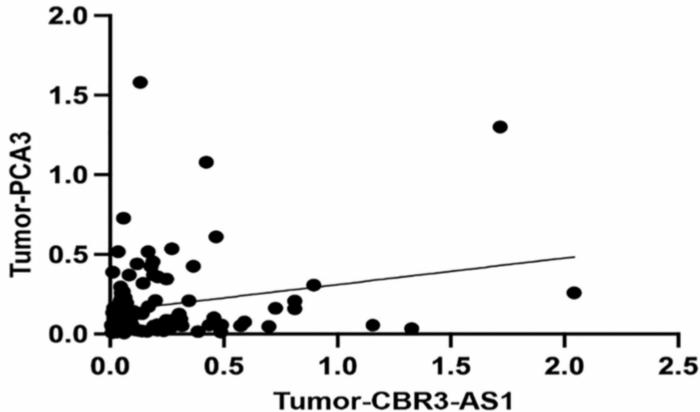In a groundbreaking study published in the May 2025 issue of Genes & Cancer, researchers from the University of Tabriz have unveiled compelling evidence implicating two long non-coding RNAs (lncRNAs), CBR3-AS1 and PCA3, in gastric cancer (GC) pathogenesis. This investigation, spearheaded by first author Parisa Najari and senior author Reza Safaralizadeh, explores the differential expression patterns of these lncRNAs in malignant gastric tissues compared to their adjacent normal counterparts, positing their potential utility as diagnostic biomarkers and therapeutic targets.
Gastric cancer remains a formidable global health challenge, ranking among the leading causes of cancer mortality worldwide due to its asymptomatic nature in early stages and consequently late clinical detection. The search for reliable molecular markers that can enable earlier diagnosis is thus a critical focus within oncologic research. Long non-coding RNAs, which do not translate into proteins but heavily influence gene regulation and chromatin remodeling, have emerged as promising molecules in cancer biology for their stability and functional diversity.
The research team analyzed tumor and peri-tumoral tissues from 100 gastric cancer patients, employing quantitative real-time polymerase chain reaction (qRT-PCR) techniques to quantify CBR3-AS1 and PCA3 expression. The results revealed a statistically significant overexpression of both lncRNAs in gastric tumor samples relative to normal tissues, suggesting their active involvement in tumorigenesis. These findings align with previous literature linking CBR3-AS1 to oncogenic functions such as proliferation and chemoresistance in various malignancies, whereas PCA3 has been established as a clinical biomarker in prostate cancer, reinforcing its oncological relevance.
To further probe the clinical significance of these expression changes, the authors investigated possible correlations between lncRNA levels and clinicopathological parameters including patient age, tumor size, cancer staging, and Helicobacter pylori infection status. Interestingly, no significant associations emerged, indicating that while the altered expression of these lncRNAs is indicative of cancerous status, it may not directly reflect tumor progression or disease severity.
The research then employed receiver operating characteristic (ROC) curve evaluation to assess the diagnostic performance of CBR3-AS1 and PCA3. Remarkably, CBR3-AS1 demonstrated an area under the curve (AUC) of 0.79, indicative of good discriminative power between cancerous and normal tissues, while PCA3 exhibited a moderate AUC of 0.68. These results underscore the diagnostic potential of these lncRNAs, particularly CBR3-AS1, to serve as molecular tools for early GC detection.
At a mechanistic level, long non-coding RNAs like CBR3-AS1 and PCA3 are understood to participate in epigenetic regulation, transcriptional modulation, and interactions with signaling pathways critical to carcinogenesis. CBR3-AS1, for instance, has been reported to facilitate tumor cell proliferation, invasion, and resistance to chemotherapy, although its specific molecular targets in gastric tissue warrant further elucidation. PCA3, meanwhile, functions through complex gene regulatory networks, exemplified by its clinically harnessed role in prostate cancer diagnosis, serving as a paradigm for its translational potential in other cancer types.
Despite these promising insights, the authors acknowledge several limitations inherent in their study design. Being a single-center investigation restricts generalizability, and the cross-sectional nature forbids causal inference regarding how these lncRNAs might drive or influence disease progression. Furthermore, functional assays exploring mechanistic pathways were beyond the study’s scope but represent essential avenues for future research aimed at defining therapeutic interventions.
The implications of this study are multifaceted. Beyond diagnostic applications, understanding the role of CBR3-AS1 and PCA3 in gastric tumor biology could pave the way for innovative therapeutic strategies targeting these non-coding RNAs. Given their regulatory capacity and tumor-specific expression, both lncRNAs exemplify promising candidates for RNA-based therapies, including antisense oligonucleotides or small interfering RNA approaches that could suppress oncogenic pathways.
Moreover, the stability and detectability of lncRNAs in bodily fluids like blood and gastric secretions raise intriguing prospects for developing non-invasive screening tools, which are urgently needed to improve early GC detection rates. This study’s identification of robust expression differences in tissue samples lays a foundational premise to investigate circulating lncRNA biomarkers, potentially revolutionizing clinical practice.
As cancer research moves increasingly towards precision medicine, molecular profiling of tumors—including lncRNA expression patterns—will become integral to personalized therapeutic decision-making. The addition of CBR3-AS1 and PCA3 to the expanding repertoire of cancer biomarkers enhances the arsenal clinicians can draw upon to stratify patients and tailor interventions accordingly.
In summary, this landmark investigation highlights the critical role of lncRNAs CBR3-AS1 and PCA3 in gastric cancer, elucidating their overexpression in malignant tissues and their promising diagnostic value. The study champions these molecules as potential biomarkers that could facilitate earlier detection and more nuanced therapeutic targeting of GC. Future multi-center, longitudinal studies coupled with functional analyses will be indispensable to translate these findings into clinical realities that ultimately improve patient outcomes.
Subject of Research: Human tissue samples
Article Title: Evaluation of LncRNAs CBR3-AS1 and PCA3 expression in Gastric cancer and their correlation to clinicopathological variables
News Publication Date: 9-May-2025
Web References:
http://dx.doi.org/10.18632/genesandcancer.241
https://www.genesandcancer.com/
Image Credits: Copyright: © 2025 Najari et al. This is an open access article distributed under the terms of the Creative Commons Attribution License (CC BY 4.0).
Keywords: cancer, gastric cancer, LncRNAs, CBR3-AS1, PCA3, qRT-PCR




